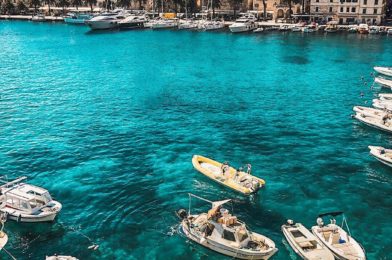Harbour is an area of A place on the coast where ships may moor in shelter, especially one protected from rough water by piers, jetties, and other artificial structures. It is a place of haven for boats in stormy weather, can also provide some wonderful vistas. Water next to the coast, often protected from the sea by a thick wall, where ships and boats can shelter. Number of nuclear-powered submarines are laid up at a harbour. There are also some interesting old buildings to see around the Shore and at the old-world fishing harbour of Newhaven. This place is vibrant and always something happening. There are many beautiful places in the world but no harbour can touch Sydney’s. Here are our top ten Harbour views.
1.China- Shanghai Harbour
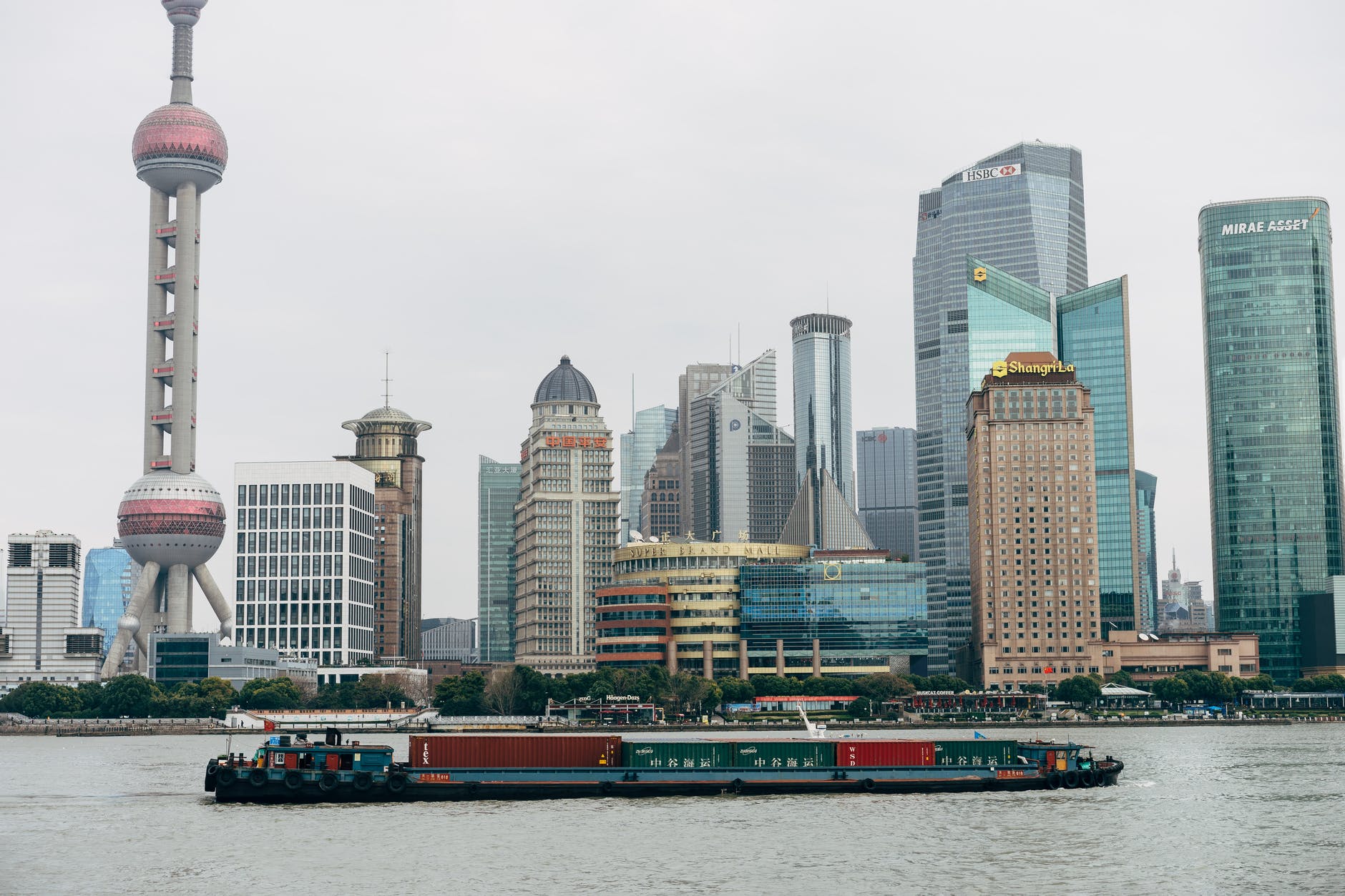
The Port of Shanghai covers an area of 3,619.6km² located in the vicinity of Shanghai, comprises a deep-sea port and a river port. The Port of Shanghai faces the East China Sea to the east and Hangzhou Bay to the south. It includes the confluences of the Yangtze River, Huangpu River and Qiantang River. The port of Shanghai became the biggest port in the world with five areas. The port also being the source for great economic activity. The Shanghai port handled 43.6 million twenty-foot equivalent unit (TEU) containers and 542.46 million tonnes of cargo in 2019. The Port of Shanghai is managed by publicly listed company that is Shanghai International Port Co and 44.23 percent of this shares are owned by the Shanghai Municipal Government.
Shanghai International Port Group (SIPG) is responsible for operating and managing the public terminals in the port. SIPG handles domestic, national and international cargo transportation. It is also responsible for maintaining, manufacturing and leasing containers, as well as building, managing and operating port facilities. The Port of Shanghai, which originally existed as Shen or Hudu between the fifth and seventh centuries AD, was given official city status in 1297. The Shanghai port has two bulk cargo terminals and three break-bulk terminals. Due to insufficient water depth at the port’s mainland, Yangshan Deepwater Port was developed in four phases. The deepwater port, which is located in the East China Sea, is 30km from the mainland and a 32.5km-long bridge connects it to the mainland.
2.China- Ningbo-Zhoushan
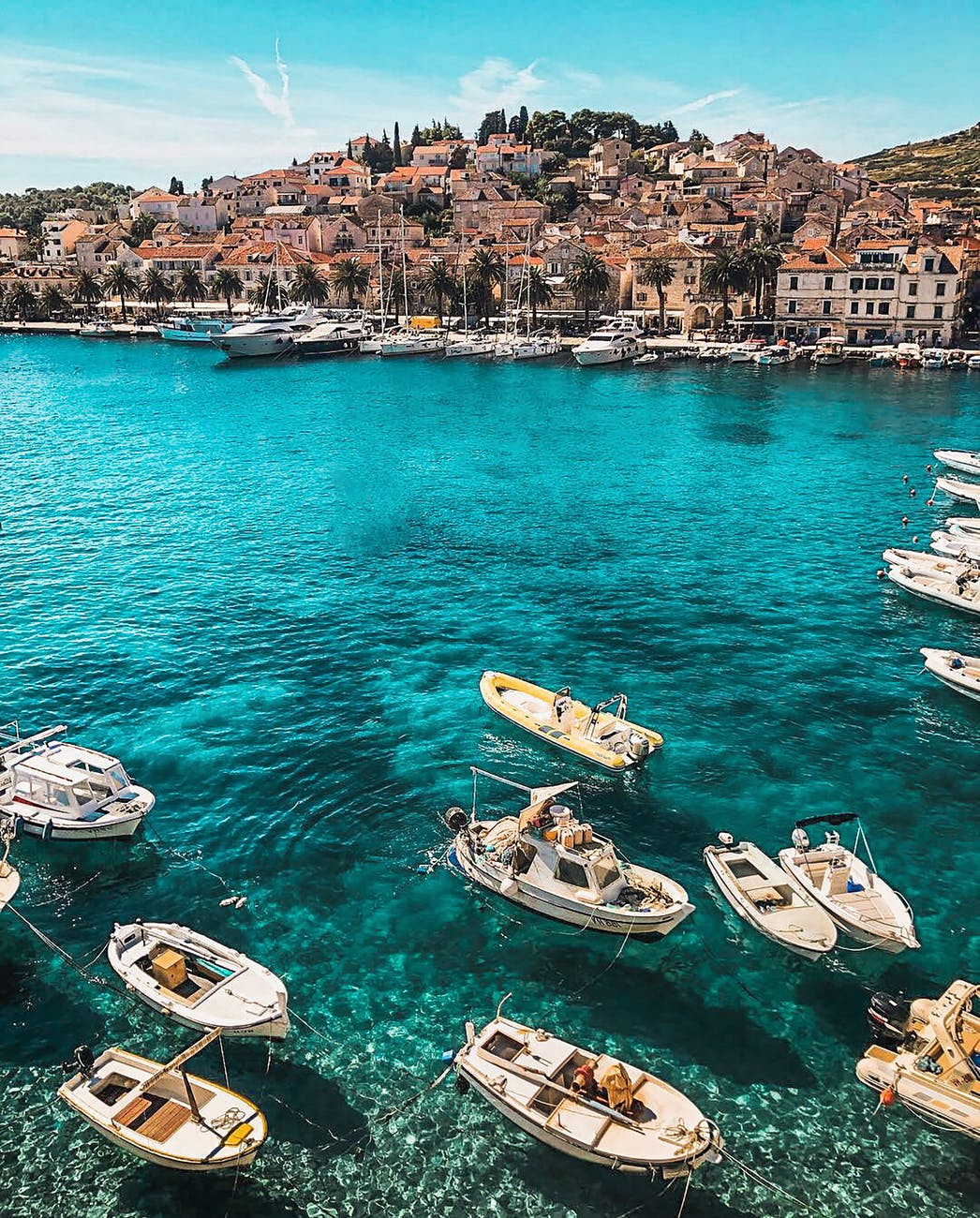
It is formed in the year 2006 as a collaborative venture between the Ningbo port and the Zhoushan port. The Ningbo-Zhoushan port is ranked the second-largest marine port and largest cargo port in the world. Totally three rivers are connecting such as the Yangtze, the Yong and the Qaintang, the port is expected to have a huge boost in the form of the construction of a new terminal. It is the busiest in the world. Ningbo-Zhoushan Port in east China’s Zhejiang Province has more standard containers. Most of the this port trade imports raw materials and manufactured goods from North America, South America, and Oceania. The port is connected with more than 560 seaports in more than 90 countries worldwide.
The company said that improved services and strengthened cooperation with global shipping giants have facilitated the steady growth of container throughput at the port. The port has rolled out an evaluation and incentive mechanism to provide better services for shipping companies, saving cost for them and improving the work efficiency at the port. Strong growth has also been posted in the port’s sea-rail transport services, which link the port by railway with other parts of China as well as countries in central and northern Asia and eastern Europe. Container handling volume of its sea-rail transport reached 729,000 standard containers from January to November, a year-on-year increase of 33.8 percent. MPA Singapore issued circular to draw attention to ship operators when navigation through fishing vessel areas in the coastal waters of Ningbo-Zhoushan Port in China. Safe navigation becomes the top priority in this areas, especially with the commence of the fishing seasons which takes place between May and September. Ningbo-Zhoushan is a large, deep-water port and city in Zhejiang Province. Zhoushan is also a Prefecture and archipelago. The city proper is on Zhoushan Island. Prefecture’s total population is over 1,15 million, of whom around 845,000 live in the districts Dinghai and Putuo.
3.Singapore –Singapore Harbour
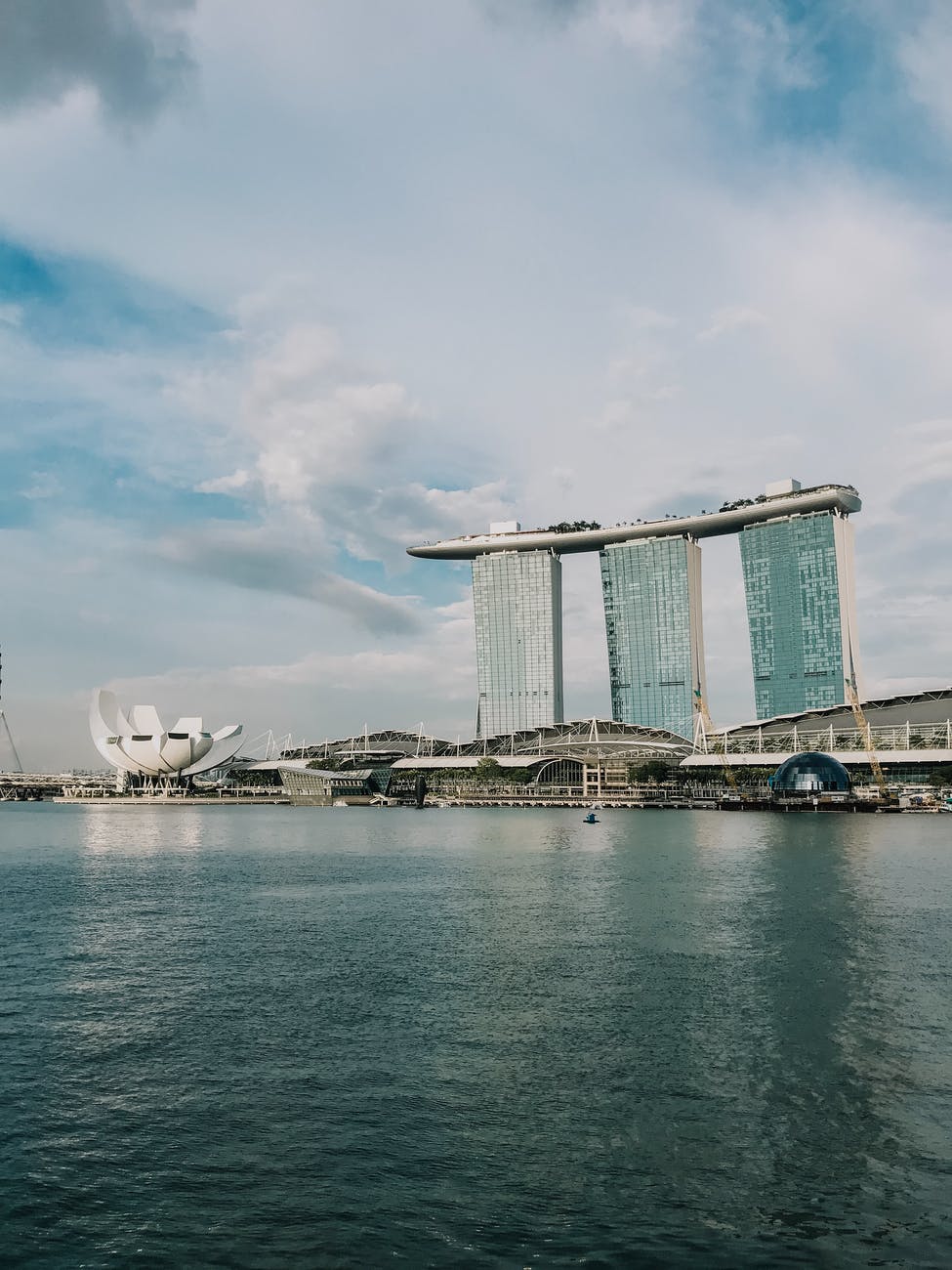
The Port of Singapore refers to the collective facilities and terminals that conduct maritime trade, and which handle Singapore’s harbours and shipping. Currently the world’s second-busiest port in terms of total shipping tonnage, it also transships a fifth of the world’s shipping containers, half of the world’s annual supply of crude oil, and is the world’s busiest transshipment port in terms of total cargo tonnage. From the Singaporean economic perspective, the port of Singapore plays a very important role as it caters to the re-export market on a mammoth scale. The Port of Singapore is not a mere economic boon, but an economic necessity because Singapore is lacking in land and natural resources. The Port is critical for importing natural resources, and then later re-exporting products after they have been refined and shaped in some manner, for example wafer fabrication or oil refining to generate revenue. The service industries such as hospitality services typical of a port of call restock the food and water supplies on ships. Ships pass between the Indian Ocean and the Pacific Ocean through the Singapore Strait. On average Singapore attracts 130,000 vessel calls annually.
The quality, efficiency, competitiveness and reliability of its port and shipping services make it the preferred international port of call. The port section contains information, guidelines and procedures on matters relating to the port and its operations. Located on the southern end of the Malay Peninsula, 30km south-west of the Port of Johor in Malaysia, the Port of Singapore offers connectivity to more than 600 ports in 123 countries. The Maritime and Port Authority of Singapore (MPA) owns and is responsible for the growth and development of the port. The port handled 37.2 million twenty-foot equivalent units (TEUs) of containers and 626.2 million tonnes of cargo in 2019. It attracts approximately 130,000 vessel calls a year, on an average, currently. The terminal is capable of handling container vessels of 130,000TEUs or more. It is transporting 50% of crude oil through this port only.
4.Netherlands-Rotterdam Harbour
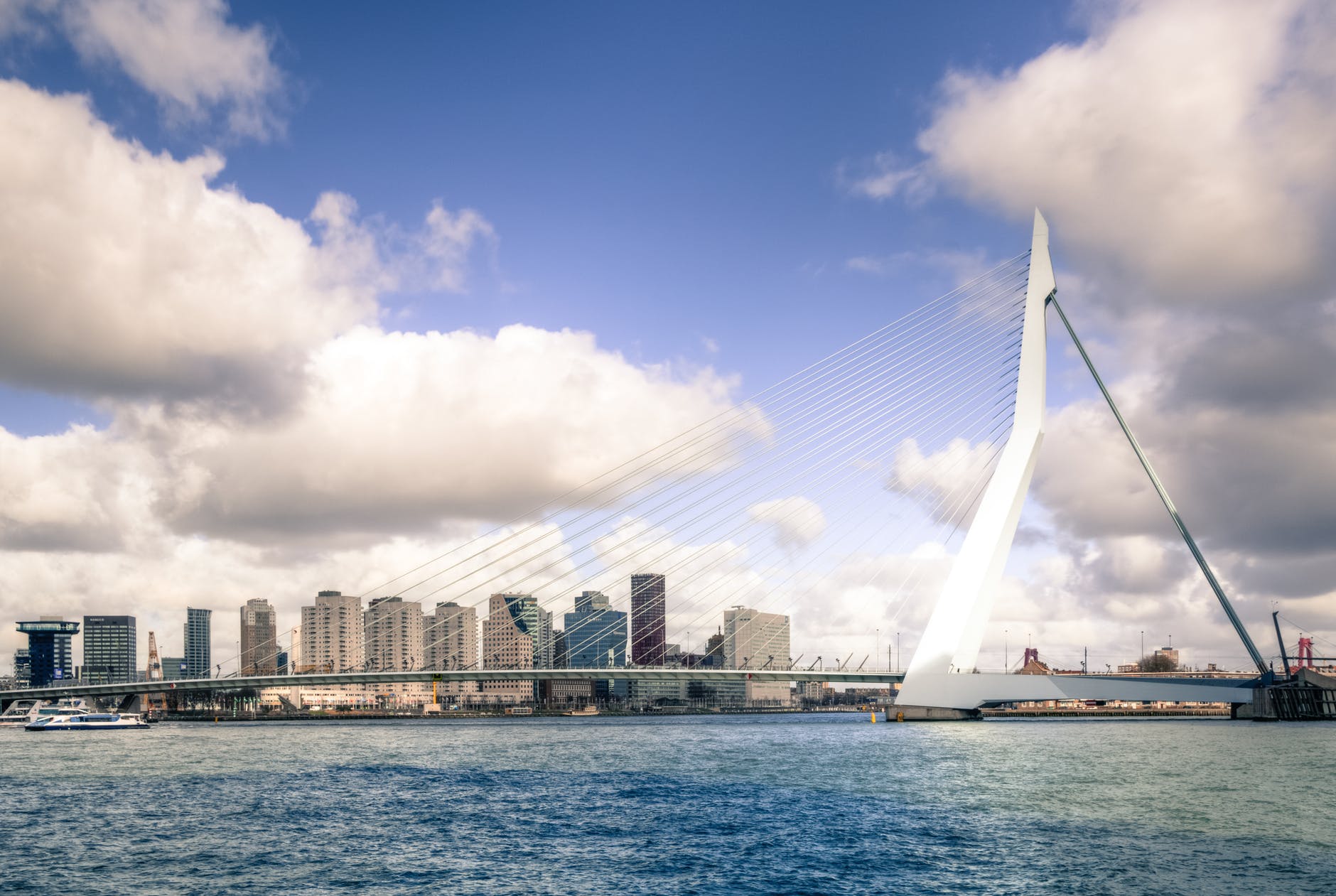
The world’s and Europe’s biggest port is Netherlands. It is the world’s busiest port and it is located in the city of Rotterdam in the province of South Holland in the Netherlands. From 1962 until 2004, it was, now overtaken first by Singapore and then Shanghai in 2018. Covering 105 square kilometres (41 sq mi), the port of Rotterdam now stretches over a distance of 40 kilometres (25 mi). The best way to see the port is aboard a Spido. Opt for one of the boat tours, cruises or day trips and explore the special architecture of Rotterdam, its historic buildings and the breath-taking views from a fully equipped and comfortable ship. Rotterdam was the world’s eleventh-largest container port in terms of twenty-foot equivalent units (TEU) handled. Rotterdam has five port concessions (ports) within its boundaries. It also served as the largest port in the world for 42-years between 1962 and 2004 before it was surpassed by Singapore and Shanghai, in that order.
The Rotterdam port is the largest port in the whole of Europe. Along with more than 20 moorages and over 120 bulwarks, the Rotterdam port has nearly 95 depots disambiguated for liquid and dry cargo, cruise liners and also for vessels navigating internally. Along with this, the port also has tug boat facilities (29) and piloting boat facilities. Under the operational authority of the Port of Rotterdam Authority, the port has undergone various constructional developments. The most prominent one of these constructions are the Maasvlakte 2 harbour and a tank depot known as Boltek. The port’s security systems are top-notch and meet all the requirements of the ISPS regulations set by the international maritime authority. In addition to this, screening systems for containers and television monitors to oversee the entire port have also been equipped in the port to ensure safety. Come closer to the heart of the port Europaweg 902, Rotterdam, there is a great view of the port area. From this starting point, you can take an impressive boat tour of the newest port area, operate a crane, or enjoy a 360° look behind the scenes of the port area.
5.China-Tianjin Harbour
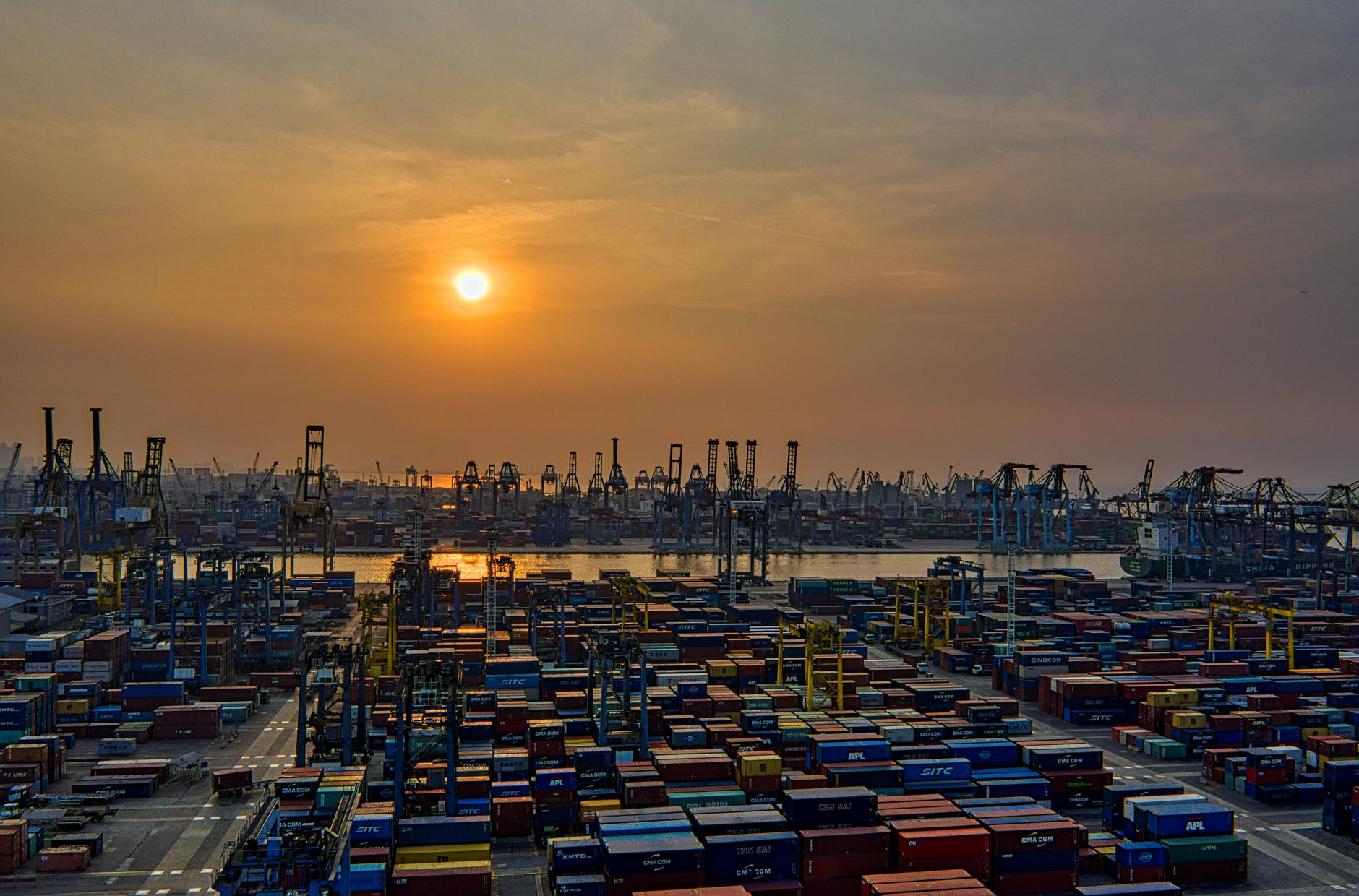
The Port of Tianjin formerly known as the Port of Tanggu, is the largest port in Northern China and the main maritime gateway to Beijing, situated at the River Haihe. It covers 121 square kilometers of land surface, with over 31.9 km of quay shoreline and 151 production berths. The port trades with more than 600 ports in 180 countries and territories around the world. It is served by over 115 regular container lines run by 60 liner companies, including all the top 20 liners. Expansion in the last two decades has been enormous, going from 30 million tonnes of cargo and 490,000 TEU in 1993 to well beyond 400 million tonnes and 10 million TEU in 2012. Capacity is still increasing at a high rate, with 550–600 Mt of throughput capacity expected by 2015. At present it is connected to over 400 ports in nearly 200 countries across the world. The Tianjin port is the third largest port in China and the single-largest port in the Northern part of the country. The Port of Tianjin is owned by the Chinese state; however, it operates as an independent corporation with its own commercial and financial activities. The Tianjin Port Group runs nearly all Port of Tianjin operations, and it employs about 40 thousand people. The Tianjin Transportation and Port Authority (TTPA) implements state policies, laws, and regulations and licenses, audits, and certifies businesses that operate in the port, particularly the terminals. The Port of Tianjin is always open. It is a complete full-service port that handles all types of cargoes including containers, liquid and dry bulk, general cargo, and vehicles. It also serves passengers.
6.China- Guangzhou Harbour
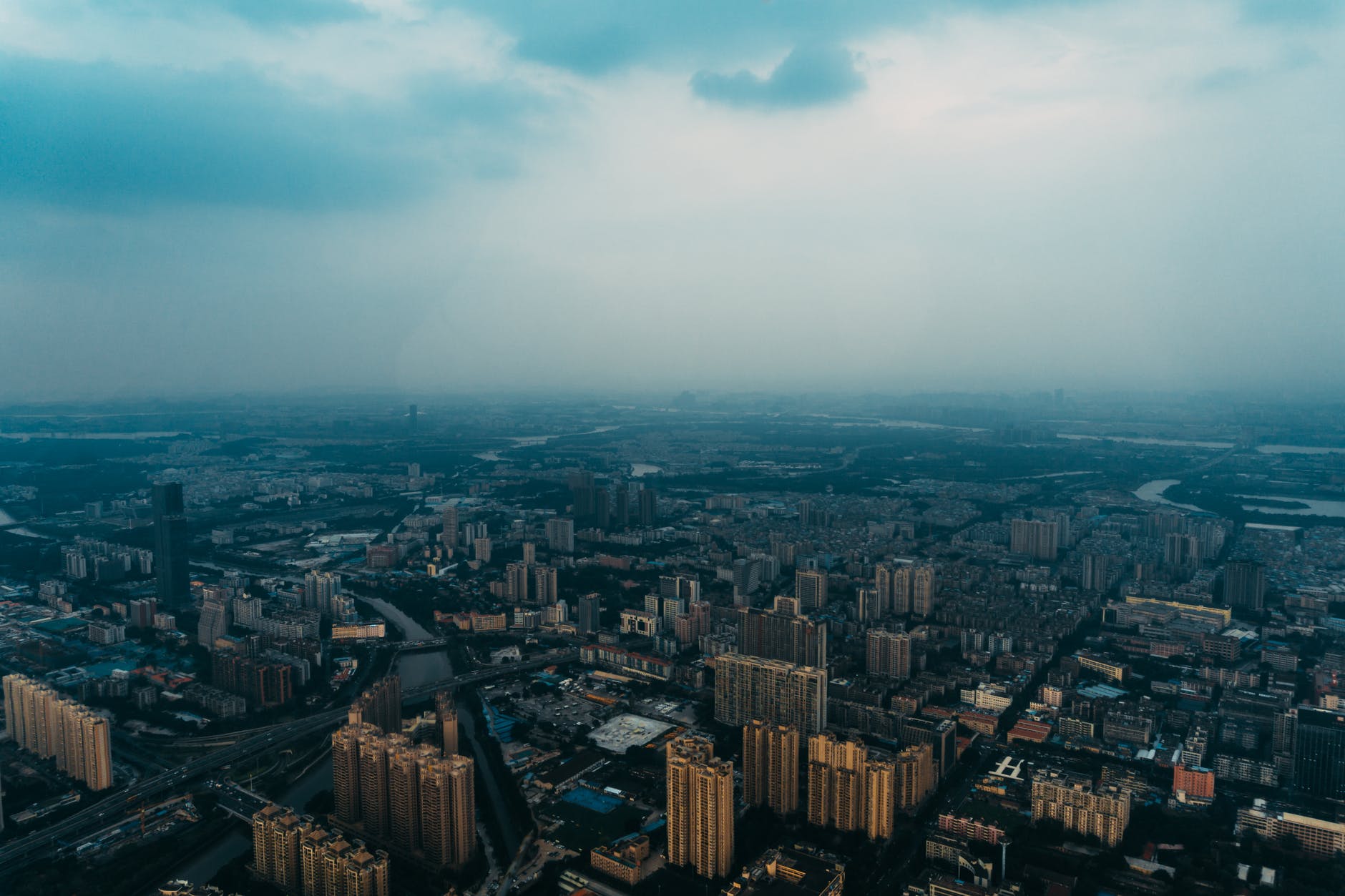
Guangzhou Port is situated at the intersection of the three most important rivers of Dongjiang, Xijiang and Beijiang in South China. All the three rivers have the waterway, railway, expressway and air lines intersecting here, thus forming a critical transportation hub. It is the main port of focus in the Pearl River Delta Region. The port handles a range of activities which include loading and discharging, storage, bonded warehousing, container cargo services. Many agricultural, industrial and manufactured products are shipped through the port which include oil, coal, grain, chemical fertilizer, steel, ore and automobiles. The port also provides passenger services as well as logistics services. It also played a major role in contributing to the success of the missionary hospital, the Canton Hospital.
The largest port in Southern China, the Guangzhou port enjoys connectivity with more than 300 ports in almost 100 countries. It was established on February 26, 2004 from the former Guangzhou Harbor Bureau. It was approved by the Guangzhou Municipal Government. The port also serves as the important economic and transport center for the Pearl River Delta region and Guangdong province. The port forms the mainstay for the industrial belt found in the Guangxi, Yunnan, Hunan and Jiangxi regions. The port of Huangpu also forms a part of the Guangzhou port. In 2010, the Port of Guangzhou handled 410 million tons of cargo, including 12.6 million TEUs, making it the fifth busiest port in the world for non-containerized cargo and seventh in the world for containerized cargo. The Guangzhou Port Group handled 270 million tons and 9.9 million TEUs alone. Guangzhou is one of the ten most famous port cities in mainland China. The famous ports for passenger use include Nansha Port and Panyu Lianhuashan Port. Besides, there are many ports for freight transport include Huangpu, Wuchong and Xintang.
7.China – Qingdao Harbour
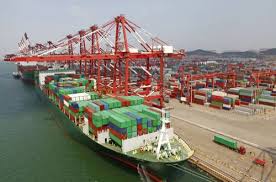
Facing Japan and South Korea, the world leaders in the shipbuilding business, the Qingdao port is a natural harbour and has connectivity with over 450 ports in over 130 countries. Qingdao is a major sub-provincial city in eastern Shandong province, China. Adjoining the Yellow Sea and located at the Shandong Peninsula, the Qingdao port is ranked seventh in the list of 10 biggest ship ports. Qingdao is a major seaport, naval base and industrial centre. Qingdao port consists of four areas: Dagang port area, Qianwan port area, Guangdong oil port area and Dongjiakou port area, some 40 kilometres south of Qingdao city. The Port of Qingdao also offers a large terminal for handling iron ore. The Port of Qingdao commenced operations in 1892. It was located between the Bohai Rim port region and the Yangtze River Delta port region in the PRC and occupied a central position among ports in Northeast Asia.
The development of the Tsingtao urban space during the German-occupation (1898–1914) originated from the port. Mass urban construction began in 1898 with the relocation of Chinese dwellers along the coast. With the completion of such series of projects as wharves, Tsingtao-Jinan Railway Line, Tsingtao Railway Station and locomotive works, a city was starting to take shape.
8.China – Qinhuangdao Port
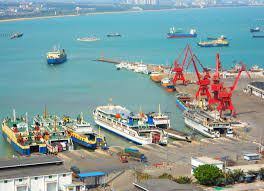
Port of Qinhuangdao is a seaport on the Bohai Sea, located in the Haigang District of urban Qinhuangdao, Hebei, People’s Republic of China. Together with the Port of Huanghua, Qinhuangdao Port is a major port for coal transportation. Qinhuangdao is the nation’s coal shipping center which is also seen as a barometer of the economy. The daily transport capacity was at least 50 vessels per day in the past. The Qinhuangdao port is mainly known for its coal transportation in the country. Statistically at present, the port is the biggest coal lading port globally and internally, accounts for nearly 50% of the country’s coal transportation between the North and the South. Qinhuangdao Port is the Group’s principal port of operation. It is an established port with an operating history of over 100years. The operation of the port is efficient and mature. It also acts as the major transiting port for Daqin Railway, whichhas the highest capacity and is the most important coal railway in China.
According to Drewry, Qinhuangdao Port is the world’s largest coal port in terms of throughput in 2012. It has a shoreline at the quay of 12.2 kilometers long, covers a land area of 11.3 square kilometers and water area of 226.9 square kilometers and is divided into eastern and western zones. Qinhuangdao Port is a natural deepwater port, is ice-free and silt-free, and has an open water and flat seabed. The port’s navigable waterways require almost no maintenance. The Group operates 50 berths in Qinhuangdao Port, including 44 berths of 10,000-tonnes and above. Among them, there are 23 coal berths, 7 oil and liquefied chemical berths, 17 general cargo berths and 3 container berths. The designed throughput capacity of Qinhuangdao Port is 226.35 million tonnes and 750,000 TEUs per year. The Group provides storage services for the cargo its handle in Qinhuangdao Port. The Group has specialized coal stacking yards, whichhave aggregate stacking capacity of 10.27 million tonnes. The Group also has general bulk stacking yards with aggregate capacity of 2.19 million tonnes. Further more, the Group operates 15 oil tanks, with a total storage capacity of 286,000 cubic meters. In addition, the Group provides a total storage capacity of 23,000 TEUs for storing containers.
9.China-Hong Kong Harbour
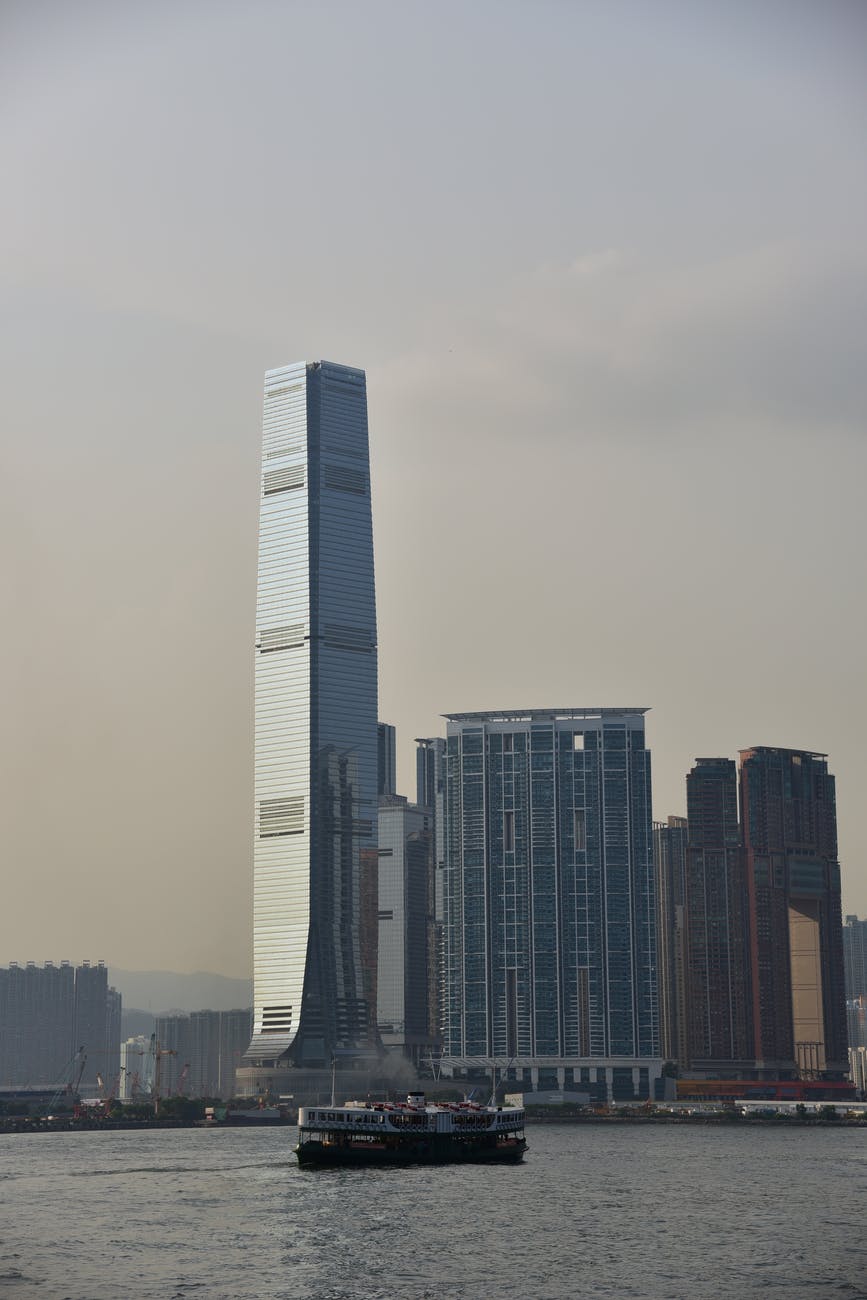
Discover the heart of Hong Kong – Hong Kong’s Victoria Harbour is probably the most popular tourist area in the world. The harbor is a complex place, but the popular tourist areas are mainly in the central section. A natural harbour, the Hong Kong port has been very instrumental in the economic furtherance of the city of Hong Kong. Ranked ninth in the list of the largest marine ports in the world, the Hong Kong port is situated in the South China Sea. In the year 2010, the port accounted for 23.7 million TEUs worth of container cargo. Hong Kong China Ferry Terminal is a ferry terminal, located at China Hong Kong City, 33 Canton Road, Tsim Sha Tsui, Kowloon, Hong Kong.
It is one of three cross-border ferry terminals in Hong Kong operated since 1988. Victoria Harbour is an almost ideally naturally sheltered channel between Hong Kong Island and the Hong Kong mainland. The channel is deep enough for the biggest ships and sheltered by the high mountains on Hong Kong Island from storm winds. It is also naturally curved like a semicircle around the north shore of Hong Kong Island so that high waves are blocked out. Islands to the east and south and a narrow opening on the eastern inlet further shelter the harbor. This sheltered area was one of the British Empire’s biggest military and trading ports, and it is now both the world’s premier tourist area and one of the world’s busiest commercial ports. Two big cruise ship ports bring in tens of thousands of eager shoppers and sightseers each year, and the transportation connections to the harbor area are among the world’s best and quickest. Long famous for its stunning panoramic views, the harbour is a major attraction of Hong Kong. A myriad of lights twinkles at night from the skyscrapers on Hong Kong Island and Kowloon Peninsula, making Hong Kong, together with Hakodate in Japan and Naples in Italy, included in the ‘three best night scenes of the world’.
10.South Korea- Busan Harbour
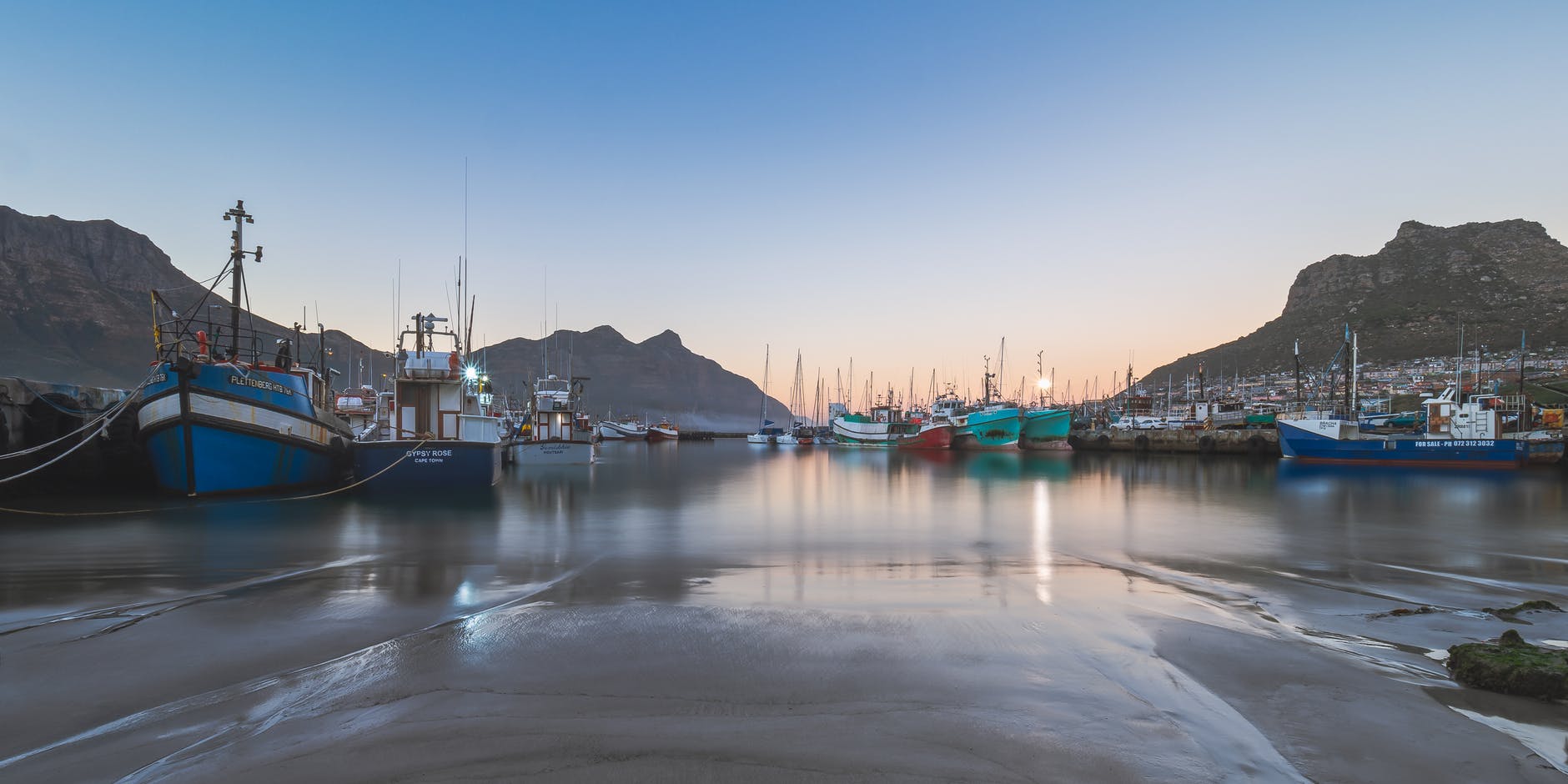
The Port of Busan, doubles as South Korea’s largest port and its second-largest city. The 10th biggest port in the world, the port of Busan is situated at the Naktong River and forms a major commercial gateway between the Pacific Ocean and the countries belonging to Eurasia. The Nakdong is Korea’s longest river and Busan’s Haeundae Beach is also the country’s largest. The Port of Busan was established in 1876 as a small port with strict trading between Korea, China and Japan. Today the Port of Busan consists of four ports- North Port, South Port, Gamcheon Port, and Dadaepo Port, an International Passenger Terminal and the Gamman container terminal. The North Port provides passenger handling facilities and cargo, and with Gamcheon Port’s help more cargo volumes can be handled (Ship Technology). The South Port is home to the Busan Cooperative Fish Market which is the largest fishing base in Korea, and it handles 30% of the total marine volume. Busan Port handled cargo containing fertilizers, meat, scrap metal, petroleum and other gases, crude petroleum, coal, leather, fats and oils, iron ore, rough wood, natural sand, milling industry products, and sugar. Top exports of South Korea are integrated circuits, cars, refined petroleum, passenger and cargo ships, and vehicle parts.

